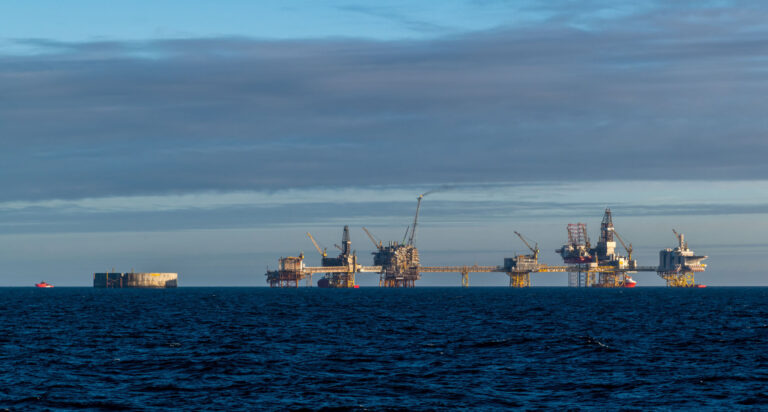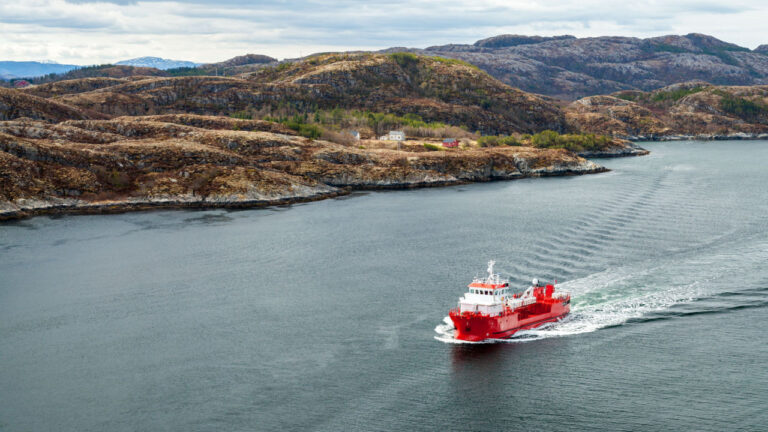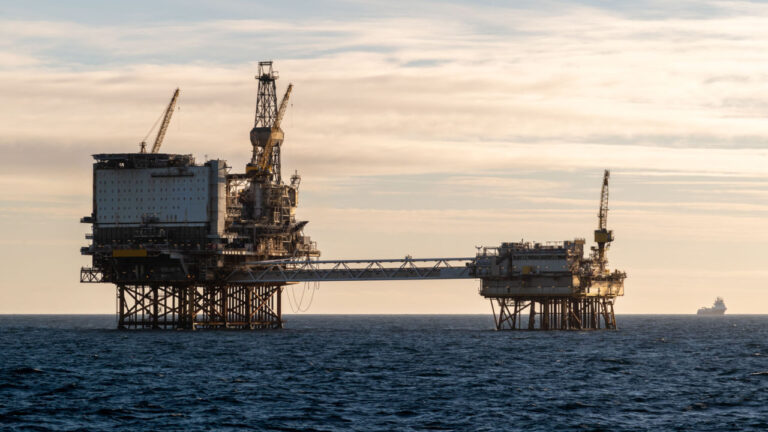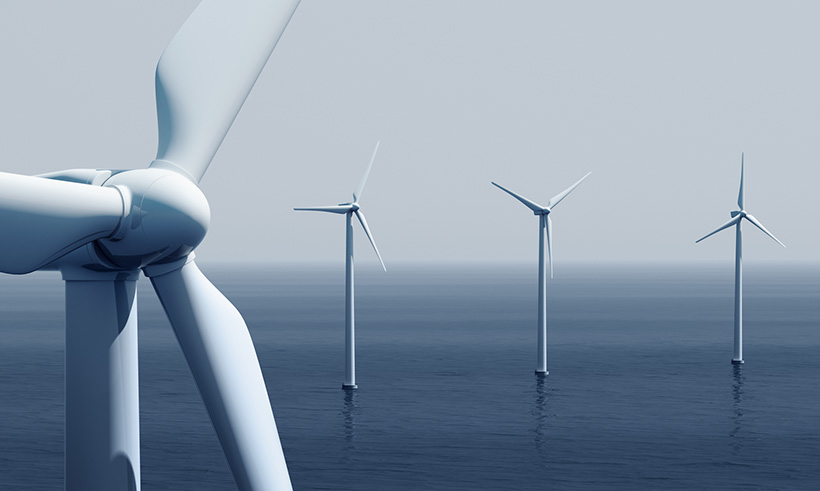An economic driver for the whole of Norway, the Norwegian Continental Shelf is a geographic feature home to critical industries. Here’s what you need to know.
If you have an interest in all things Norwegian, you may have heard or read about the Norwegian continental shelf, also known under the abbreviation NCS. It is often talked about without any explanation as to what it is, as if people are expected to know.

We’re here to clear up the confusion. Read on and we’ll tell you what the NCS is, why it’s a big deal, and how it holds some of Norway’s most valuable resources.
Simply put, the Norwegian Continental Shelf is a relatively shallow section of seabed off the coast of Norway. It contains the natural resources that has made Norway one of the world’s wealthiest countries. Let’s break it down.
What is a shelf?
In oceanography, a shelf is a relatively shallow area of seabed that extends from the shoreline. It is more or less flat, has a depth of around 200 metres (656 feet) and extends away from land before dropping off into the deeper waters of the ocean in what is called the continental slope.
When we say “more or less” flat, don’t imagine a plane of glass. The Norwegian continental shelf, for instance, has water depths that vary between 100 and 400 metres.
But it is still relatively flat, considering that beyond the edge of the shelf, the water depths drop rather suddenly to a few thousand metres. You can think of a continental shelf as a part of a continent that just happens to be underwater at the moment.
In fact, the shallowest areas of the NCS were above the water line during the last ice age, when a large portion of today’s seawater was locked up in ice.
Why the NCS is important
The Norwegian continental shelf is not just a geological phenomenon; it’s an economic goldmine for the country. Until the 1960s, the area was used mostly for fishing and shipping, but that all changed when oil was found.

At first, Norwegian geologists were sceptical about the possibility of oil and gas resources in the North Sea. However, the discovery of the Groningen gas field, off the coast of the Netherlands in 1959, set off a wave of enthusiasm for hydrocarbon exploration in the region.
In 1962, Phillips Petroleum requested permission to explore for oil and gas in the Norwegian sector of the North Sea. After several rounds of licensing, the first exploration well was drilled in 1966, but it turned out to be dry.
In 1969, the situation changed dramatically when Phillips Petroleum made the massive discovery of the Ekofisk oil field, which went on to become one of the largest offshore oil fields ever discovered. The Ekofisk field had such large reserves that it is still in production today, over 50 years after its discovery.
Many other fields were discovered afterwards, with some of the most notable being Statfjord, Oseberg, Gullfaks, and Troll. These fields have been instrumental in the development of the Norwegian petroleum industry and continue to be important sources of oil and gas production.
More recently, in 2010, another very large oil field called Johan Sverdrup was discovered, ensuring oil and gas can still play a major role in the country’s economy for many years in the future.
Aside from oil, the shelf is also good for fishing. The transition areas between deep sea and shelf are known to be brimming with life, and the best fishing grounds are either on the shelf or on its edges.
A newly extended shelf
In recent years, the NCS has been extended through a lengthy United Nations process that has allowed Norway to expand its territory beyond the previous 200-nautical-mile limit.

Under international law, all coastal states are entitled to a continental shelf that extends 200 nautical miles from their shores, regardless of geological conditions.
However, some states, including Norway, have topographical and geological conditions that make it natural to include areas beyond the 200-nautical-mile limit.
In 1982, the United Nations Convention on the Law of the Sea (UNCLOS) was adopted, laying out a roadmap for countries wishing to extend their territory based on their underwater geology.
After years of work building its case, Norway obtained what it wanted in 2009: a recommendation from the Continental Shelf Commission to extend the Norwegian continental shelf by an additional area of approximately 235,000 square kilometres.
This decision opens up new opportunities for economic activity in the area. Oil and gas is a natural contender, but deep sea minerals are also increasingly mentioned as a possibility.
However, the prospect of even more industrial activity at sea has raised concerns about the potential impact on the environment and marine life. As a result, the Norwegian government has implemented strict regulations to ensure sustainable management and protection of the extended continental shelf.
Future industries on the NCS
The environmental impact of Norwegian oil and gas activities is a source of controversy in more than one way. Aside from the direct effects of industrial activity on the local fauna and flora, there is the question of the emissions caused by Norway’s fossil fuel extraction.
Since the country committed to reaching net zero emissions by 2050, it is currently in the process of finding new, low-carbon industries for the NCS. The idea is not only to reduce emissions, but to create new sources of energy to replace oil and gas, as well as new streams of revenue.
Offshore wind
While Norway has been slow off the block in the field of offshore wind compared to other countries such as Denmark and the Netherlands, it is currently building the world’s largest floating offshore wind farm.

Hywind Tampen, when completed, will have a capacity of 88 MW and provide energy to nearby offshore platforms.
Carbon storage
The same geological features that give the NCS its oil and gas riches make it a prime location for storing CO2 under the seabed. This has been done for decades by Norwegian oil giant Equinor, in a pilot project at the Sleipner oil field.
Carbon storage is not a large industry yet, but several more pilot projects are in the works to capture CO2, transport it and store it. The technology is expected to play a major role in the ongoing transition to reach climate targets.
Offshore energy hubs
Massive amounts of offshore wind power and carbon storage offshore will create a need for offshore hubs to gather energy and either store it or export it. These hubs are expected to store energy with batteries and by converting it to fuels such as ammonia and hydrogen.
Plans are already in the works to build some off the coast of Denmark, and Norway is expected to follow suit.
Deep sea minerals
We have already mentioned the extraction of deep sea minerals as a possibility for a future industry on the NCS, but this is entirely hypothetical, at the moment. No one has started extracting such minerals anywhere in the world, but we mention it as a future possibility since it is being discussed.
An unchartered future
Whatever the future holds for the Norwegian continental shelf, it seems safe to say that the next few decades will be quite different from the past ones. Oil and gas activity will no doubt continue, for a time at least, but other industries will be joining it.
Whether these new industries will have the same kind of impact on the country as oil and gas remains to be seen. What is certain is that there are exciting times ahead on the Norwegian continental shelf.

